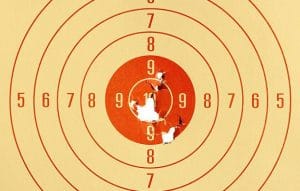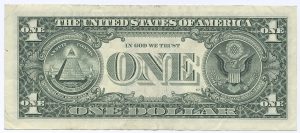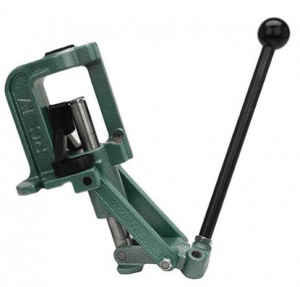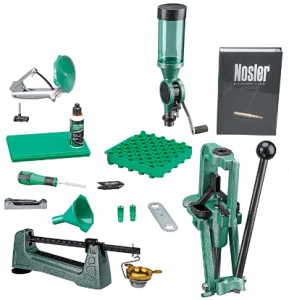As a real prepper in 2023, you have to know how to reload ammo, store powder and ammunition, what your rifle caliber is, and what bullets you utilize. Do you know what is better, a cartridge case or a shell, and what size will be just enough to keep your ammunition and projectile secure? Become a prepared survivalist after learning the essentials and get the ultimate tips once you choose your firearm tool.
Every survival gear needs additional expenses, and a gun is not an exception. The bow requires arrows, the car requires fuel, and a survival gun should be loaded with ammunition.
To tell the truth, you will spend much more money on the ammunition but not on the gun. The cost savings are large if you do not use your pistol. However, survivalists always get into extreme situations when the survival firearm can save a life. That is why you should always be confident that you have enough amount of ammunition in your bag.
If you do not have a survival gun, there are main points why do you need to buy it:
- Self-defense
- Collection
- Hunting
Some of these reasons require everyday training because your opponent, be it an animal or a man, maybe more powerful and skillful than you. You will succeed in shooting only if you improve your skills regularly. Even if you just collect firearms, there is no reason for you not to try it. I guess every lover of guns appreciates them for their performance and not just an appearance. If you are a volume shooter, you will need to apply a huge amount of ammo to your mastering, and it is one of the biggest parts of your expenses.
There are people who buy guns and ammo not only for their utility but also for preparing. Professional survivalists store the ammo in safe places to be armed when all shelves with gear are empty. People prepare their stock for the disaster to be sure of their ability to survive.
There are cases when preppers have more than a thousand of 9mm rounds Luger and rifle rounds. Probably these people spend a major part of their budget on ammo.
Imagine a moment when all the rounds will disappear from the Wal-Mart — there will be an apocalypse. For this reason, you must gather as much ammunition as you can.
You can decrease the costs of the ammunition by reloading. It is more affordable to not purchase complects of factory ammo, but buy all elements separately and then unite them.
Moreover, you can create custom rounds and set the needed shape, weight, and other features to get the highest accuracy. Rifle rounds can be reloaded manually, so you will be able to reproduce the ballistic you will be satisfied with. Reloading will allow you to gain suitable characteristics of the scope and sight range for the increase of the rifle quality.
There are plenty of differences in the power and bullet weight between munition of different producers. For example, 174-grain Winchester is not similar to the 150-grain Remington. It can be a problem when you use only one version of rounds for your precision rifle or gun, but there is no such version in the store.
Usage of the one type of rounds is a significant benefit for those who prefer to use rifles for long-distance shooting. It is the case when reloading will give you a financial and comfortable benefit.
Let’s have a look at the advantage of reloading your own ammo in its accuracy.
Increasing Accuracy through Reloading

It is not always the case that reloading will reduce your expenditures on the ammo but can significantly raise the quality of the rifle performance.
For example, the costs for ammo for Russian firearms or surplus rifles such as Mosin Nagant are low, and it will not be profitable for you to reload them. The availability of the 7.62x54P and 7.62×39 rounds causes low prices for this ammo. Nevertheless, some people doubt the quality of this gear because of the huge series of production. When the rounds, cartridges, and other ammunition elements are manufactured on a large scale, there can be defects in them.
You may notice the low accuracy of AK when you shoot for more than 200 yards. The reason for that is the low-quality munition from gun stores.
I can say from my personal experience that the Winchester has twice a lower standard deviation in the shooting than Tulammo, but the former rounds cost three times more than the latter ones. In this case, the producers offer better accuracy for a higher price.
We recommend you reload your own ammo, even if the ammunition is cheap in the stores. It will allow you to adopt the gear to your firearm and reach higher accuracy in shooting.
Reloading Ammo to Decrease Costs
As we already know, there are types of ammo that are affordable for most gun owners. You can purchase Luger rounds, 22LR, and some other equipment for loading in every store for a low price.
However, most of the munition is critical for your budget. For example, .38 Special, .357 Magnum, .45 ACP have higher prices because of the high demand but low supply on the American market. The more is the surplus of any good. The higher is the price.
Popular and old calibers have a low cost and are supplied to almost every area in the US.
That is why you need to master reloading, which will help you to save money. Let’s figure out what the profit will be for reloading?
So, you can buy about 50 rounds of the category .38 Special for approximately $21. However, you will spend up to $10 to reload your own ammo of this type. The calculations are simple — you will protect your income from extra expenses with the reloader.
Regarding the inexpensive ammo, you will spend about $12 to reload Luger rounds and the same amount to buy them. There is no benefit for you on the financial side, but high profit in the gun’s performance. There are a lot of survivalists and gun lovers who reload their firearm even if it does not give any money to them.
It’s worth it to reload the ammo for rifles because it will allow you to spend three times less money on the ammunition. Twenty of .30-06 rounds cost from $20 to $30 in a supermarket, but you can reload them for only $10 with your own hands.
Overall, the larger amount of powder in rounds for rifles increases their price just as well as a bigger weight. Moreover, the costs for delivery are higher for the weighty goods. That is why it is more beneficial to reload this ammo category than purchase it in the market.
Reloading Mechanisms
You can find all information about the materials and prep tools you need to reload your ammo in this part of the article.
The list of necessary for reloading stuff:
- Cartridges
- Rounds
- Priming Coat
- Powder
Make sure you have all these materials before you get started reloading your own ammo. Also, you will need to use special equipment such as a reloading press.
There are two types of reloading presses on the market: single-stage press and multiple-stage press. They are different in their functionality and sales price.
The single-stage presses have a lot of advantages as well as the more advanced ones. Several brands manufacture reloading presses in the US, among them RCBS and Hornady.
RCBS Crusher does its job perfectly and is easy to use. This single-stage press can reload only one cartridge with one push. On the contrary, multi-stage presses can take a few actions at once.
If you think about the purchase of the single-stage press, you may want to know the price for it. Single-stage presses are available for $300-$400 on the market nowadays. The press includes balance beam scales, priming instruments, and some other tools needed for reloading.
Such reloading kits require additional equipment for the reloading. You will need to buy stamps for each caliber you reloading (stamp for the reloading of 308), case lubricant, sizing instrument, and probably some other tools. The set of the required devices depends on the type of firearm you have.
There is a review on the RCBS Rock Chucker Supreme and a short guide on reloading the ammo with this mechanism.
How to Reload Ammo — Step-by-Step Tutorial
We highlighted five steps in reloading:
- Calibration and decapping
- Flaring
- Adding a primer coat
- Inserting a powder
- Seating
Watch the video with a detailed illustration of the reloading steps to be able to reproduce this process.
1 — Make Calibration and Decapping
This step incorporates two main actions. Read the tutorial carefully so as not to miss anything important.
Firstly, you need to remove the used primer from the cartridge.
Then measure the brass scale and change its sizes for a new bullet. You will need to use a reloader for this task. Just make one press to place the cartridge into the sizing die.
The die will be attached to the top of the reloading press, and the cartridge will be set on a cylinder. All elements will be fixed in their places because of the shell-holder until you will push the reloader’s lever.
After the pressing, the cylinder will go up and move the cartridge to the decapping die, the die will make a pressure on the brass, and brass will take the form of factory rounds. The brass is flexible metal, and the reloading press can easily change its shape and size.
The last stage of this operation for the gun cartridge is moving out the primer from the reloader’s cartridge. The rifle ammo needs more processing then.
As far as rifle cartridges are concerned, you need to perform two steps more. The initial action you need to take is to cut the cartridge to make it of appropriate length. The original length allows the cartridge to fit the rifle, but after the firing, this element changes its size because of the heating. That is why you need to shorten it if you want to reload your rifle.
Convince that you have precise and accurate tools that will help you to fit the cartridge to the needed size. You will need calipers and a trimming instrument to perform this procedure.
Remember that the ammo is transformed after every firing. It means that the metal becomes thinned and will break down at some moment. Do not overuse the brass cases and check their state before every reloading.
Moreover, brass casings for rifles are longer than handgun cases. So, the rifle cartridge will go deeper into the resizing die during the pressing. We recommend you use lubricant and smear the case neck to avoid getting stuck in the die. If you face such an issue, only producers will help you remove rifle cartridges from the reloader.
Process of Shooting
You need to understand how the shot is firing and what deformations happen with the ammo to clarify the necessity of some steps of reloading.
The process starts with the pressing on the trigger. At this moment, the striker achieves the cartridge primer, and it releases burning inside the brass case. The heating of the powder charge causes a blast inside the firearm. This explosion from powder charge increases the volume of air inside and creates pressure. The gas inside grows with speed equal to at least 12,000 PSI in milliseconds.
This chemical procedure forces the bullet to move to the barrel of smaller diameter. The bullet plays the role of the stopper inside the barrel because of the difference in the sizes. As the pressure rises, the cartridge began to adjust its shape to the needed space. Then the base of the bullet fits the rifling inside the barrel and rotates.
At this moment, the bullet is stable and can exit the gun at high speed. The usual velocities are equal to 1000 feet per second, but the speed of rifle bullets is much higher — about 2500 feet per second. The thing is that the rifle ammo includes higher powder chargers and havier elements that affect the pressure inside the barrel. It reaches the value of 62,000 PSI what is much higher than the pressure in pistols.
So, the case mouth transforms after the firing, and it will not be appropriately set into the pistol during the following shooting. The die for decapping will help you to return the shape of the brass casing and fill it with powder charges again.
2 — Shell Flaring
You need to repeat the procedure described in the previous step to provide perfect bullet seating. Size the brass casing again and use the single-stage press one more time. The cartridge will be put into a die, and it will inflate the case mouth to locate the bullet inside.
You can be confused with the final diameter of the brass cases, but remember that the bullet should be tightly inserted into the casing to avoid a fall.
You should not perform this procedure for the rifle ammo.
3 — Adding a New Primer
Now you have made a case prep and are ready for the next step — inserting a primer coat. It includes blasting elements that will allow the bullet to exit the barrel.
There are two options you may choose to make this step: purchase an automated mechanism or make it with a manual tool. Do not be afraid that you will not cope with this task. You will get perfect results even if you choose the second variant because it is easy to add primer to the primer pocket.
I guess you will find two types of primer in the gun stores — Berdan and Boxer. The difference between these primers is in the construction of the case head. Let’s figure out what are the advantages and disadvantages of both of them.
The Berdan primers are mostly used for the military surplus rifles and Eastern ammo. There are two holes in these cases, and they provide better ingress of the flame into the case. It means that you will not be able to apply a common die with one pin for the decapping for this primer. If you do so, elements of the reloading press will be broken.
As regards the Boxer primer, it is popular among all modern producers of ammo. Unlike the previous type of primers, the Boxer cartridge has one hole in it. So, the flame can get inside the casing through only one gap. The standard dies in the reloading presses can remove the old primer from this type of cartridges without any effort.
To sum up this comparison, the Bernard ammo is cheap on the market today, so you do not have any reason to reload it. Also, their casings are made of steel, and it is not appropriate metal for reloading. It will be more convenient to buy new ammo instead of its reuse if you are ready for reloading ammo, select boxer primers.
Once the cartridge is of the correct size and the primer is in the primer pocket, you can continue with a powder charge.
4 — Inserting Powder
Make sure you use suitable for your cartridge powder because some of them are not compatible—for instance, powder for rifles flares with lower speed than the one for pistols. Misusage of inappropriate powder can damage not only your rifle but you as well.
The easiest way to know the type of powder you need for your firearm is to read the reloading tables or consult with the experts. They will advise you on how to select the type of powder, its charge, and the pressure you need to have in your cartridge. Also, pay attention to detail, such as the weight and settings of the bullets.
The weight of the bullet is its weight in grains. You probably know that weight affects the value of inertia the thing can have. For example, you need to give more energy to the ball with a bigger weight in the bowling because it has higher inertia. You need to select the appropriate weight to keep the same inertion of the bullet.
As you already know, there is pressure inside the gun when you shoot. Bullets with higher inertia need to gain speed longer than light rounds. The pressure created inside the rifle is different from the one inside the pistol. If you insert the powder for pistols inside the rifle ammo, there will be pressure problems — it will be much higher than normal for the rifle. It means that your firearm may burst at any moment.
Remember that you need to keep the balance in pressure inside the firearm to avoid critical situations. Choose lower powder charges for heavy bullets to prevent the high pressure in the rifle.
Even though the moment of the shot into longer than one second, the pressure may increase with much higher velocity. So, you should not let the barrel explode. Consider the type of weapon you have, the weight of the bullet, and the charge of powder you insert.
5 — Bullet Seating
Now you can finish the ammo reloading process by pushing the bullet into the case mouth.
Bullet seating is the depth on which it will be fixed inside the case. Depth of seating affects the time of leaving the case. As you know, the time of leaving is tightly connected with the pressure inside the barrel.
You will understand that something is wrong with the depth or chosen powder charge if the case mouth is flawed.
If you insert the bullet to a small depth, it will exit the gun with lower speed, and the ballistic will be spoiled.
The powder measure is also important in the reloading because some people fill in the casings at 25%. It allows shooters to locate more than one load into the cartridge that may be unsafe for them. Your firearm will be ruined with such a colossal charge firing at one moment, and it will hurt your body as well. That is why you must wear protective glasses when you use the gun.
When you have used the seating die, you will be ready to crimp the cartridge. It means that you need to press the case symmetrically to fit the bullet perfectly. You can check whether you do it correctly by touching the side of the casing. You should not feel the gap between the bottom of the bullet and the case neck. If you insert the bullet loosely, it may leave the case earlier, and the powder will not be fully burned.
The features of incorrect crimping are soot, low accuracy, and speed. Crimping allows the powder to burn enough for the creation of relevant pressure inside the barrel and keeps the inertia a little longer.
As regards the rifle ammo, it is usually crimped by the reloader itself. You need to set the proper depth on the seating die and slightly press the sidewalls of the case to seat the bullet.
You Need to Know How to Reload Your Own Ammo
We presented all the necessary information for a successful reloading process. We also recommend you find the instruction with all tips about the reloading equipment, sizes of ammo, powder scale, the weight of cartridges.
There is everything you need in videos and manuals for the prevention of typical pitfalls in reloading ammo.
Remember, you will not have time for reloading if the apocalypses start. You should not only collect reloading supplies but load the cartridges now to be ready for TSHTF!
Place the ammo in reliable containers or cans for ammo. Otherwise, it will not survive until the moment you will need it.
Make sure you look through more references about this topic because reloading ammo is a difficult and risky task.
You may get injured during the first reloadings — do not treat it lightly.
FAQs
How to Eliminate Glare While Shooting?
The first option you can choose is sunshade optics. There are some models of scopes that will protect you from the glare until the sun will fall. Another affordable variant is to wear a cap while shooting. It will protect your eyes from rain and sunlight and will allow aiming better. Besides, many survivalists make a slit in the scope cap. It reduces the clarity of the image but really helps in the prevention of bright light.
Can I Make Ammo by Myself?
Yes, you can make ammunition by yourself, but you will need to master your skills and purchase the required equipment. You can interpret the making of ammunition as its reloading. Reloading ammo will help you save money and set your gun to the best accuracy. Factory ammo is usually of worse quality than a self-made one. That is why many shooters prefer to load gun bullets, rifles, or shotgun shells by themselves.
Why Reload Ammunition?
There are several reasons you may want to learn to reload. Firstly, ammunition in the stores usually costs much higher than you will spend on the reloading equipment. You may save about two-thirds of what you would spend on the produced supply for firearms. Secondly, every gun has individual settings, and you should keep them to receive the best accuracy. So, you do not need to buy ammunition, but you can choose one type of bullets and load them every time you need them.
Can I Learn How to Reload Ammo Myself?
You can learn anything you want nowadays with the help of electronic resources on the market. You will devote some time to get the required skills, but then you will reload your gun with no effort. To make the studying process more efficient, watch the videos and read reloading manuals. There are characteristics of every type of gun and ammunition in them. Also, purchase a single-stage press and practice your skills with it.





